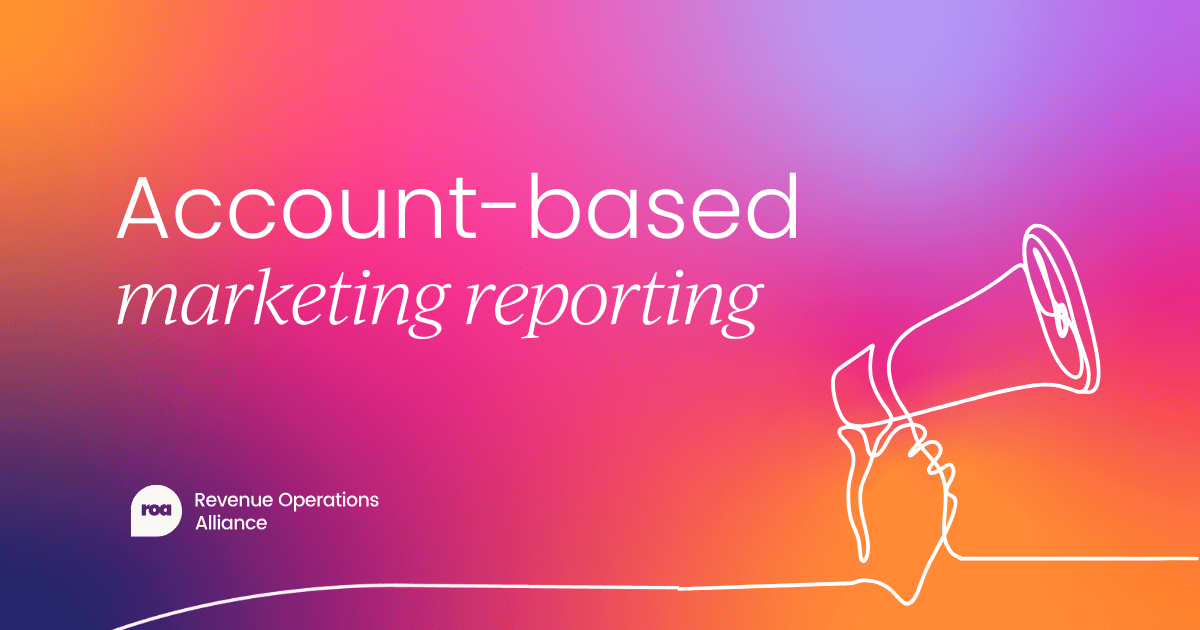Account-based marketing (ABM) has become a real cornerstone of modern B2B marketing strategies, particularly when it comes to targeting high-value accounts. The idea is simple: focus all marketing efforts on a select few “dream” accounts and personalize everything for maximum impact.
When it comes to ABM, email is one of the most powerful tools in your toolkit. It’s direct, personal, and relevant, and when crafted properly, it can open doors and turn those leads into valuable long-term customers.
So in this article, we’ll explore ten ABM email examples proven to drive results. It’s time to ditch your cold outreach or generic marketing blasts. With these email templates and tactics, you’ll optimize your ABM strategy and boost your chances of turning high-potential leads into loyal clients.
Let’s get started.
Why ABM emails matter
Before diving into the email examples, it’s important to understand why ABM emails are so crucial to your overall marketing strategy. Let’s be honest: there’s a lot of noise out there in the world of B2B marketing. We’re talking about cold calls, unsolicited LinkedIn messages, and spammy emails flooding inboxes daily. But ABM emails? They cut through all that.
ABM isn’t just about sending generic marketing emails to a broad audience. It's about sending targeted, personalized emails to the right people at the right time – your "dream" accounts.
Personalized ABM emails go beyond getting noticed; they’re designed to get responses. A good ABM email can increase engagement by 39% compared to generic email blasts, and personalized subject lines alone can boost open rates by a whopping 26%.
Simply put, ABM emails are more likely to generate serious business opportunities.
Types of ABM email sequences
When it comes to ABM, the email sequence you choose depends entirely on where your prospect is in the sales funnel. Whether you're reaching out to cold leads, following up after a recent event, or nurturing warm prospects, your email sequence’s tone, content, and structure need to match the situation.
Here are three key types of ABM email sequences to keep in mind:
1. Cold outreach ABM email sequence
You’ve got a fresh prospect on your radar who may not even know who you are. This is where cold outreach comes in. Your goal here is to introduce yourself and your company in a way that resonates with their pain points. You want them to see you as the solution they didn’t even know they needed.
Touchpoint #1 – Introductory email
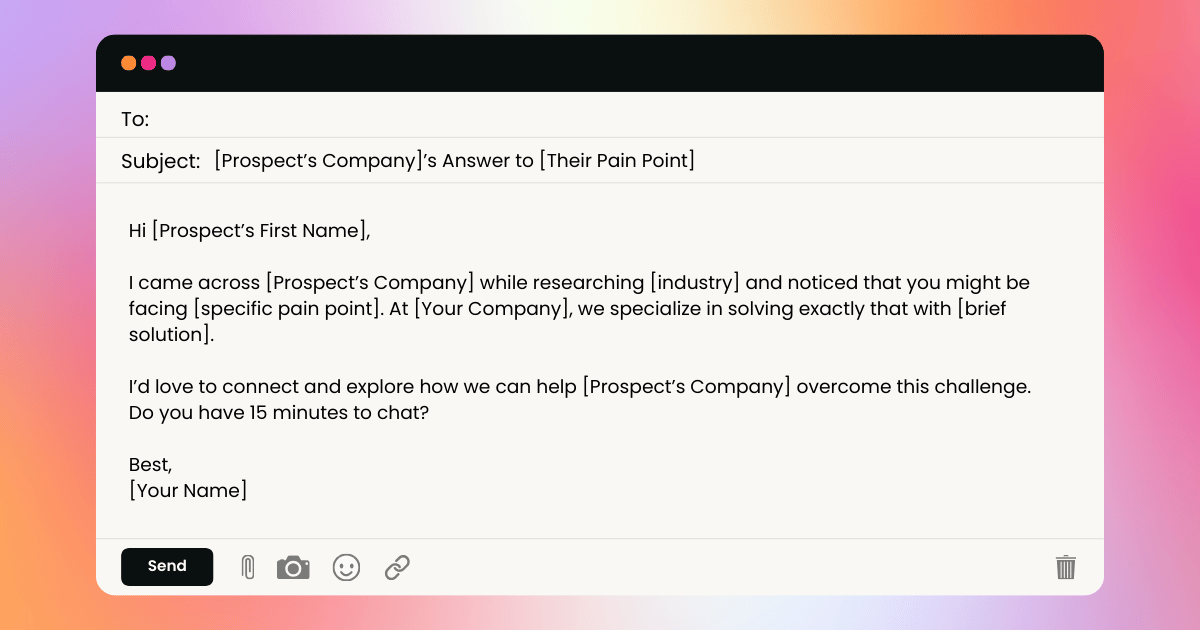
Touchpoint #2 – Follow-up (3–5 days later)
If you don’t hear back after your initial email, a gentle follow-up can help. Keep the focus on value and the potential benefits of engaging further.
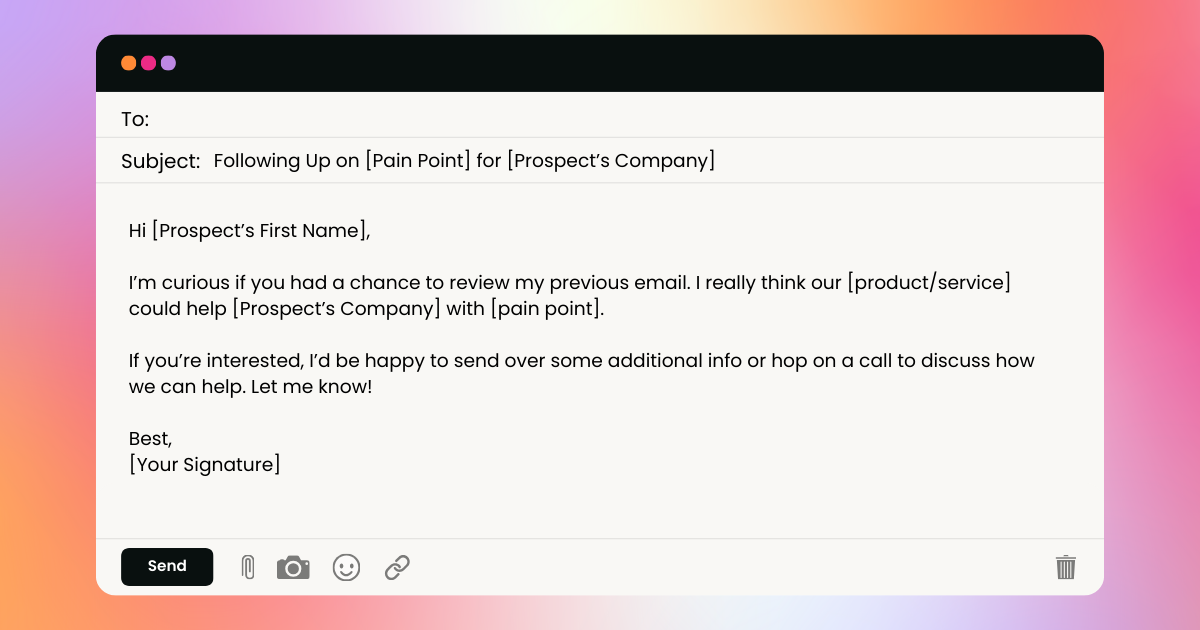
Touchpoint #3 – Provide value with a resource (7 days later)
Send something valuable to help them, even if they’re not ready to engage. This shows you’re thinking of their needs, not just pushing for a sale.
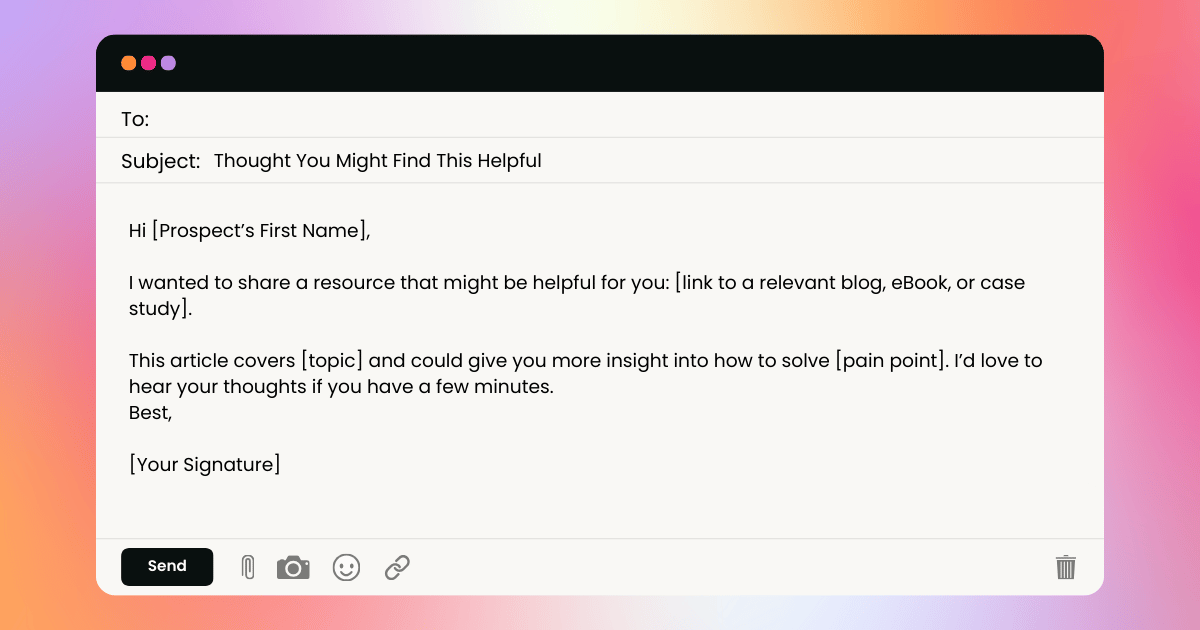
Touchpoint #4 – Breakup Email (10–14 Days Later)
If you’ve still received no response, it’s time to send a breakup email. This is your last attempt to connect, and it should focus on providing value without sounding desperate.
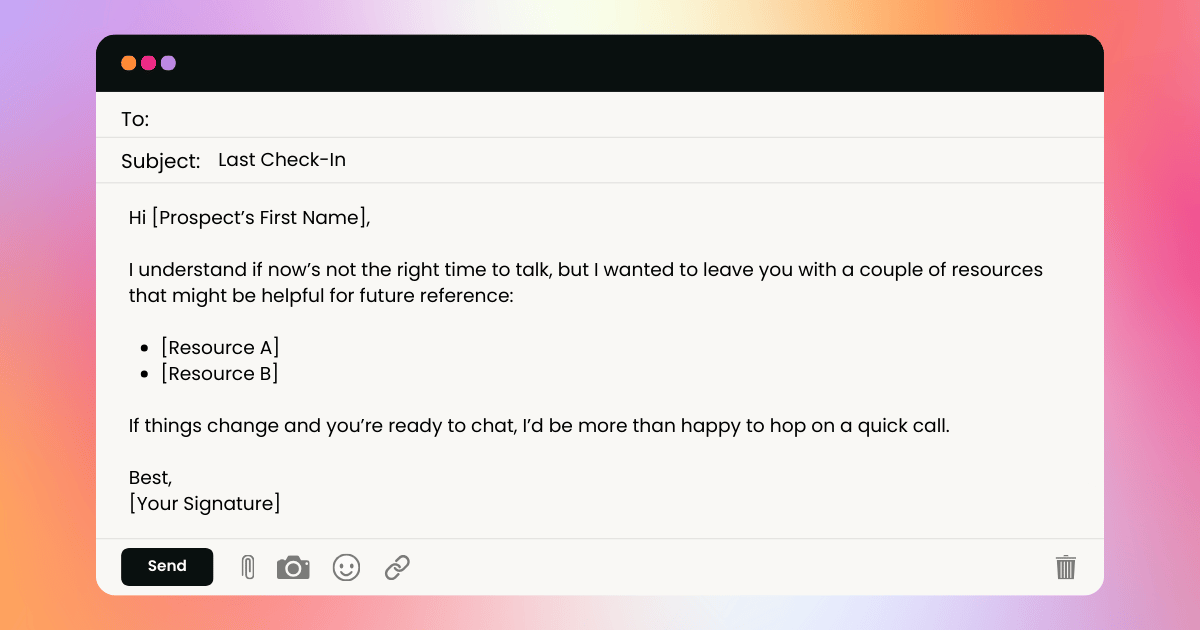
2. Event-based ABM email sequence
Let’s say you’ve just met a prospect at an event or trade show, or they’ve shown interest in a recent webinar. This is your chance to keep the momentum going by following up with a timely, relevant email sequence.
Email #1 – Reinforce connection (1–2 days after the event)
This email should remind the prospect who you are and why you connected in the first place.
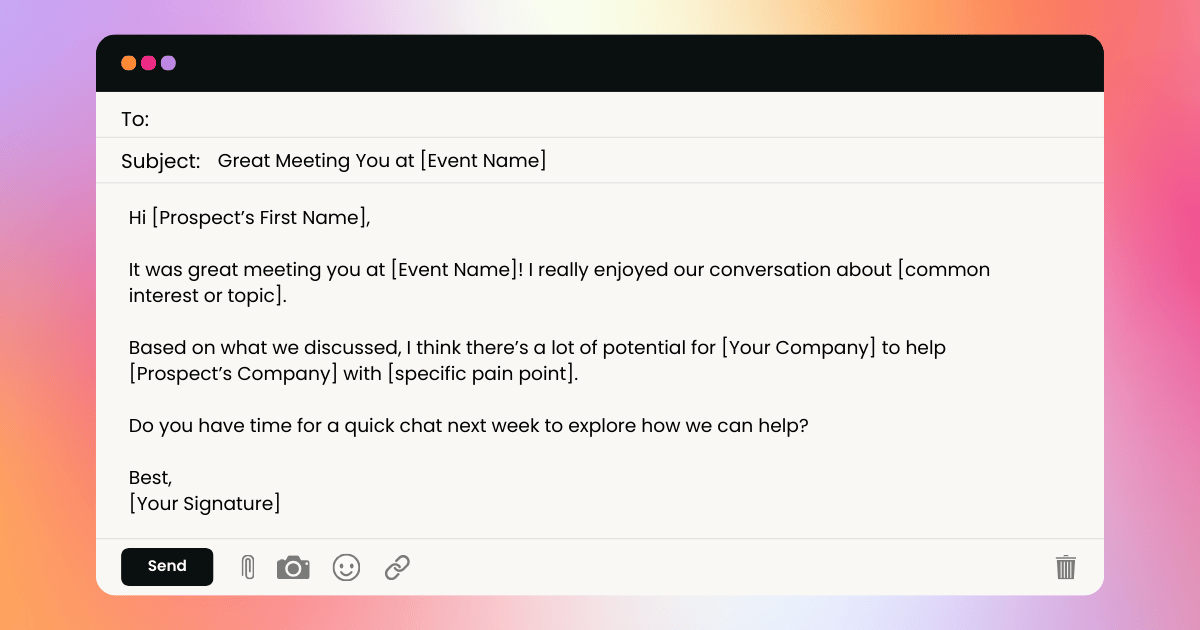
Email #2 – Share additional resources (7–10 days after the event)
This email should provide extra value with resources that are relevant to the discussion you had at the event.
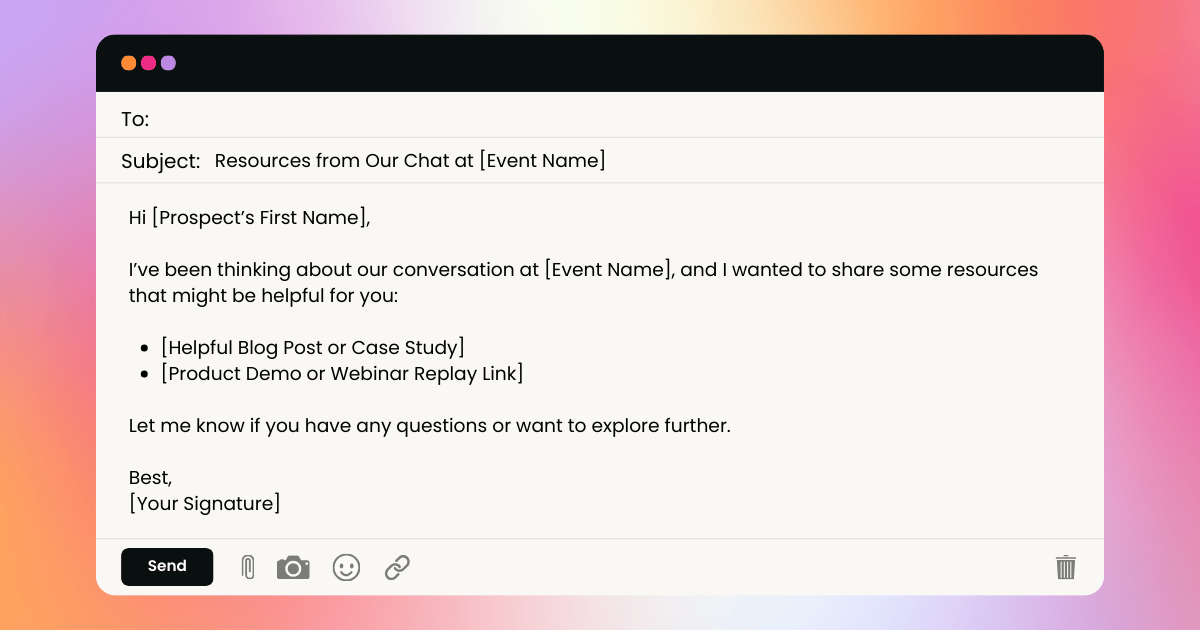
Email #3 – Set a meeting (5 days after email #2)
At this point, you’re aiming to secure a meeting to continue the conversation.
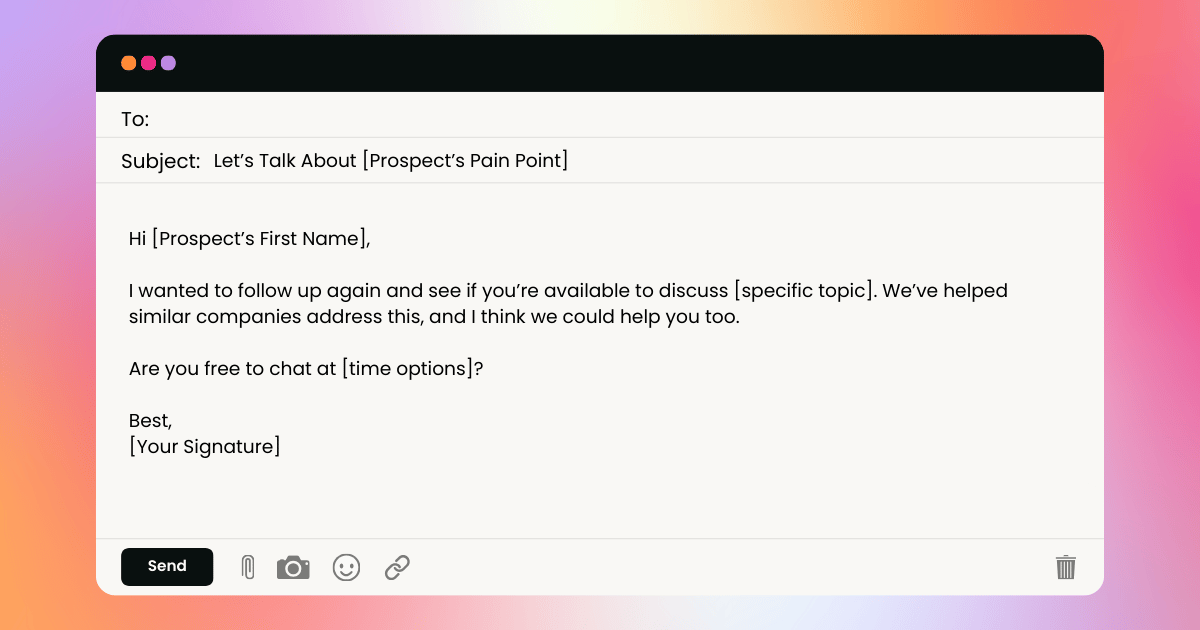
3. Warm lead ABM email sequence
When a lead has already shown some interest – perhaps by downloading content or attending a webinar – it’s time to nurture them further with personalized emails that move them closer to conversion.
Email #1 – Initial follow-up
This email should aim to understand the lead’s current situation and offer a personalized solution.
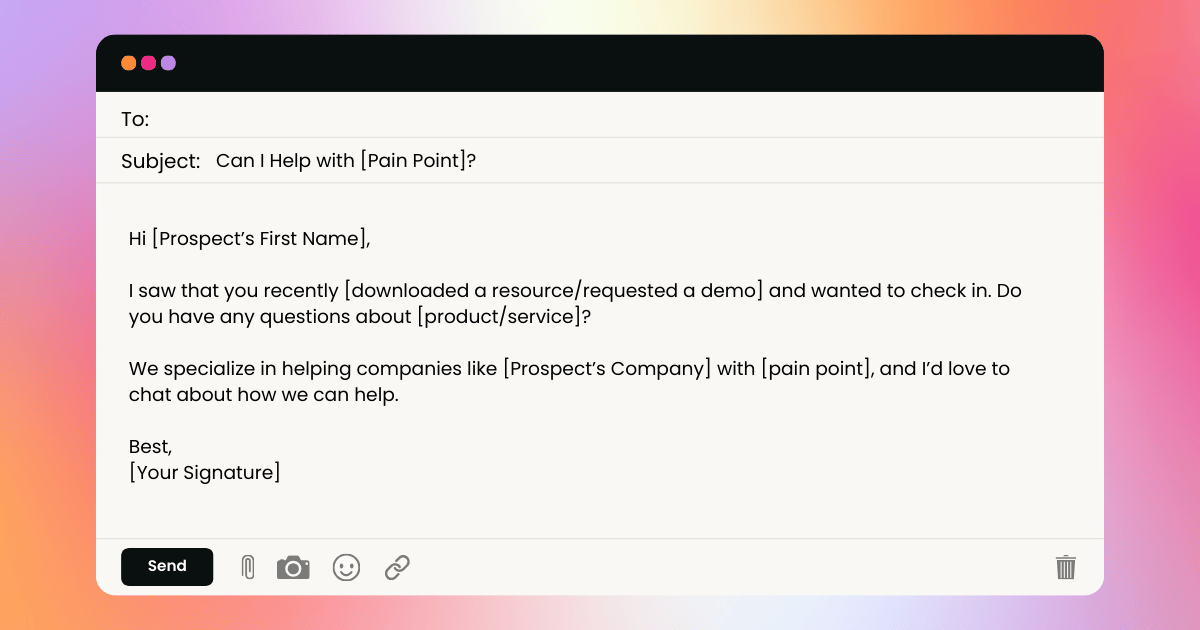
Email #2 – Share additional value (5–7 days later)
Share more content or case studies that address the prospect’s specific challenges.
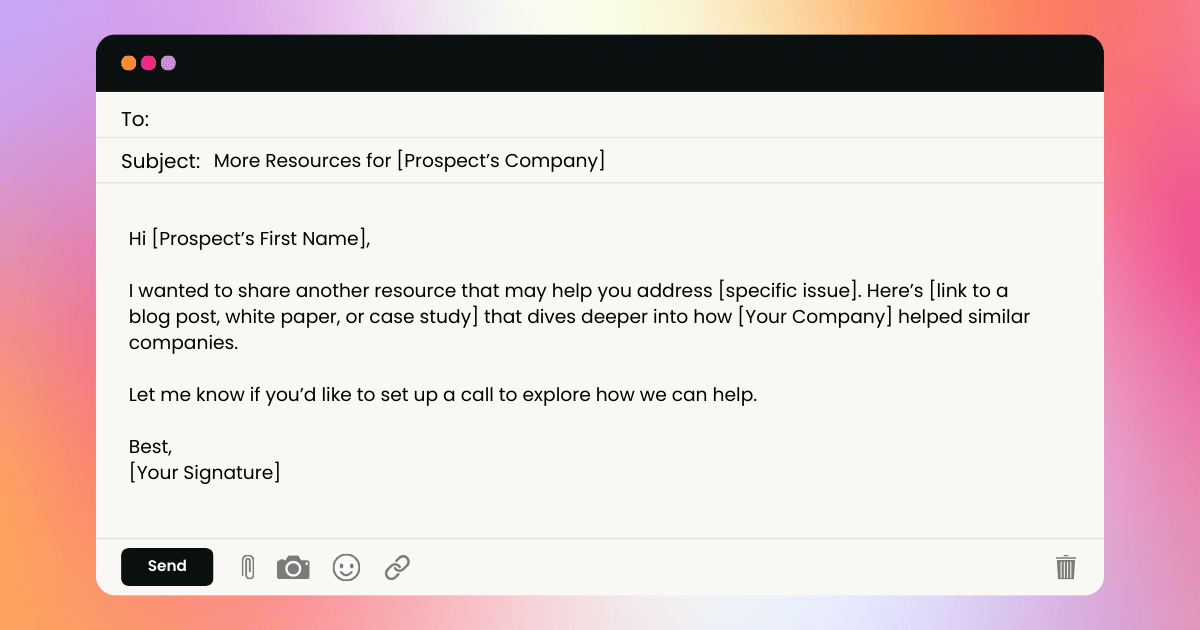
Email #3 – Breakup email (7 days later)
If you’ve still received no response, send a final email to either end the conversation or leave the door open for future contact.
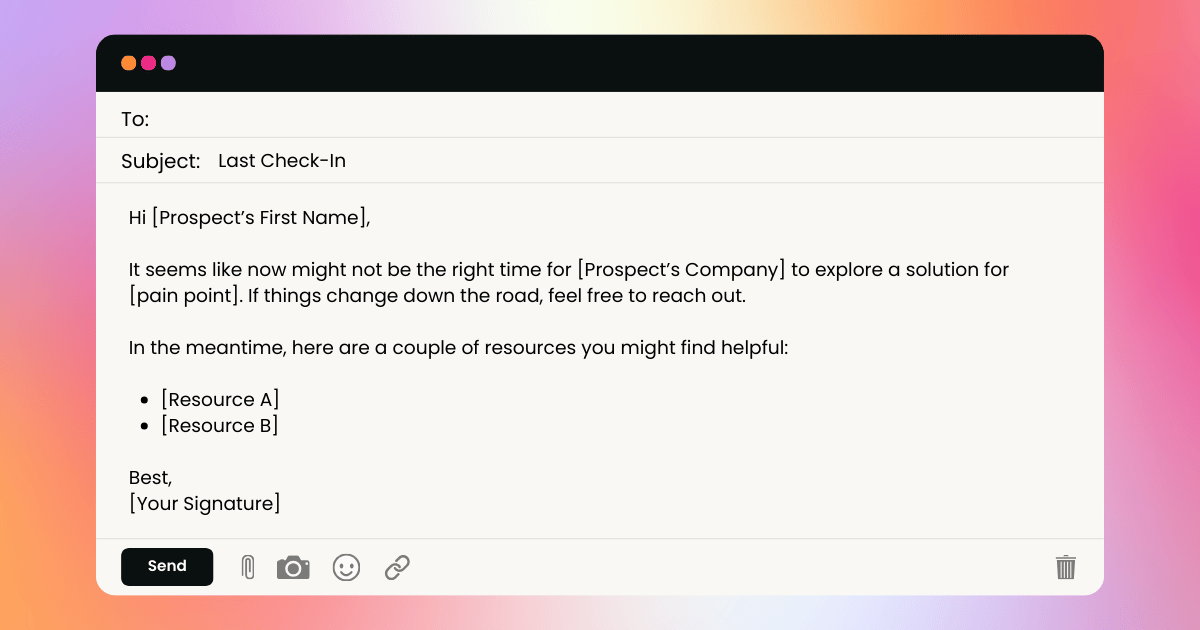
Practical tactics for ABM emails
Now, let’s talk about a few tactics that can make your ABM emails stand out even more. These strategies can really help drive engagement and increase your chances of success.
Personalized video emails
Video is an incredibly powerful tool in ABM. Personalized video emails have been shown to boost open rates by 35% and increase click-through rates by over 150%. Why? Because video grabs attention in a way text alone can’t. Plus, it shows you’ve taken the time to create something special just for that prospect.
Tip: Keep your video short, around 30–45 seconds, and focus on addressing the prospect’s pain point. Think of it as a friendly “Hey, I’m here to help” message that goes beyond the usual sales pitch.
Gifting
Who doesn’t love a thoughtful gift? Gifting in ABM emails isn’t just about giving away freebies – it’s about showing you care and you’ve put in the effort to make the interaction more personal. Whether it’s a gift card, a branded coffee mug, or something related to the prospect’s interests, a small but thoughtful gesture can go a long way in building goodwill.
Tip: Make sure the gift is relevant. If you know the prospect is into fitness, send them something related to that. A well-thought-out gift will get their attention and make them more likely to engage with you.
Personalized invitations
Inviting prospects to an exclusive event or webinar is a great way to engage them without making it feel like a hard sell. But the key here is personalization. Instead of sending a generic invite, make sure the invitation feels tailored to the prospect’s interests and challenges.
Tip: Use data from your CRM to segment prospects by their interests or industry and send them invitations that reflect that. The more specific you can get with the invite, the better. Highlight how the event or webinar will help them solve a problem or achieve a goal they care about. Make it clear why it’s worth their time.
Key takeaways
We’ve covered a lot of ground in this guide, so let’s just recap some of the key things to remember when tackling account-based marketing emails:
- Personalization is key: The more personalized your emails are, the higher the chance of success. Make sure to reference specific pain points, interests, or industry-related news.
- Timing matters: ABM is a long-term strategy, so space out your emails appropriately. Follow-up emails should feel like part of an ongoing conversation, not just another sales push.
- Value over volume: Always prioritize providing value over sending high volumes of emails. Tailored content, resources, and even gifts can go a long way in building meaningful relationships.
- Keep it human: Avoid sounding robotic or salesy. Your emails should feel like a conversation between two professionals, not a corporate pitch.
ABM is all about precision and personalization, so the more tailored and human your account-based marketing emails are, the more likely you’ll engage your target accounts and build long-lasting relationships.
The key to success lies in understanding your prospects' needs, speaking directly to those needs, and offering them value at every step of their journey.
Personalized emails, thoughtful resources, and an authentic approach can turn cold leads into conversations, and these subsequent warm leads into long-term customers.
In the world of ABM, every email matters. So, make sure each one counts.
FAQ
1. What’s the best way to measure the success of my ABM email campaigns?
Tracking the success of your account-based marketing emails goes beyond just open and click-through rates. While – don’t get us wrong – those are important, you'll also want to monitor how your emails move prospects down the funnel.
Key metrics to focus on include the number of responses, meetings scheduled, and deals closed. Tracking engagement with personalized content, like videos or resources, can give you additional insight into which types of emails your audience finds the most valuable.
2. How do I personalize ABM emails without seeming too "salesy"?
Personalizing ABM emails is absolutely critical to their success and should focus on solving your prospect’s pain points, rather than just pushing a sale. Reference specifics like their company’s challenges, industry trends, or even a previous conversation or event you attended together.
The key is to make the email feel like a helpful, professional conversation – not a generic sales pitch. Keep the tone friendly and genuine to avoid sounding like just another email blast.
3. How many follow-up emails is too many in an ABM email sequence?
The number of follow-ups in an account-based marketing email sequence depends on the prospect’s engagement level and their stage in the funnel. As a general rule, aim for three to four follow-ups spread across roughly 10–14 days, with each email offering value, such as additional resources, case studies, or insights.
If you haven’t received any response after that, it’s time to send a "breakup" email, like the ones above, offering one final helpful resource before parting ways.
4. Can I use automation tools for my ABM emails, or should everything be personalized manually?
While manual personalization is important, automation tools can still play a big role in streamlining your account-based marketing email efforts and saving you time.
Use automation tools to set up triggers for sending follow-ups or nurture sequences based on specific actions, like opening an email or downloading a resource.
Tools like ChatGPT, Claude, and Perplexity also make it easier to tailor your emails to specific audiences. Just make sure the content is still personalized, and always allow room for a personal touch. The goal is to maintain a balance between automation and authenticity.




